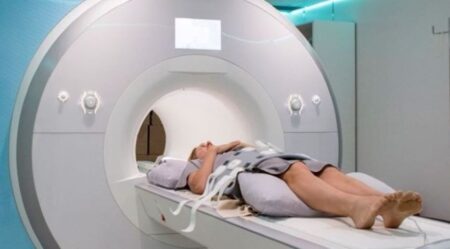Australia lags developed world on heart disease scanning
CT scanning must become the norm in the fight against heart disease
THE Australian newspaper reports that cardiologists are calling for new national guidelines on cardiovascular disease to recommend the widespread adoption of a test known as a CT scan calcium score.
What is a CT scan calcium score?
Calcium scoring uses a CT scan of the heart to see how much calcium is visible in the walls of the arteries.
Some people not deemed at risk by current assessment measures may have plaque and already have heart disease. Calcium scoring can pick that up.
Coronary artery calcium scoring is not covered by Medicare. The cost of the test is therefore an out-of-pocket expense. The average cost is around $200.
Melbourne cardiologists Brett Forge and Richard Harper brought national attention to coronary artery calcium scoring following the death of Shane Warne of a sudden and unexpected heart attack. They said such sudden heart attacks were largely preventable if CT scanning was used.
Coronary heart disease is Australia’s number-one killer, taking fifty lives every day.
Why is CT calcium scoring necessary?
Dr Forge said some researchers had estimated Australia’s current risk assessment guidelines miss 45 per cent of people who are going to have a heart attack. Others deemed at risk may have recorded a zero-calcium score and were therefore unnecessarily taking medications.
“Most other OECD countries have moved in the direction of these tests and this risk assessment process,” said one prominent cardiologist, Professor Marwick. “I don’t know of any place that has been so slow adopting this as we have.
“The reality is we are under-treating at the moment. We have a primary prevention system that’s not working effectively.”
Victor Chang Cardiac Research Institute executive director Jason Kovacic said Australia currently did a “below average” job on screening.
“I think CT screening is something we definitely do need to seriously consider bringing into our guidelines and funding models.”
What needs to change?
National guidelines on absolute cardiovascular disease risk date from 2012 and are currently being updated. The Heart Foundation of Australia, which publishes the guidelines, says risk will be better calibrated and the new guidelines would “bring Australia to the forefront of heart disease prevention globally”.
“There is indeed a role for calcium scoring in risk prevention, and we are pleased to say that calcium scoring is being strongly considered in the new Guideline,” said the foundation’s chief medical adviser Garry Jennings. “I think everyone in the field would agree that coronary calcium scoring has got a role to play,” said the foundation’s chief medical adviser Garry Jennings. “But it’s got to be used appropriately. It’s got to be used in the right group.”
The new guideline is due to launch in June. Once it is in place, it’s over to the Minister for Health to ensure coronary calcium scoring is covered by Medicare.
THE Australian newspaper reports that cardiologists are calling for new national guidelines on cardiovascular disease to recommend the widespread adoption of a test known as a CT scan calcium score.
What is a CT scan calcium score?
Calcium scoring uses a CT scan of the heart to see how much calcium is visible in the walls of the arteries.
Some people not deemed at risk by current assessment measures may have plaque and already have heart disease. Calcium scoring can pick that up.
Coronary artery calcium scoring is not covered by Medicare. The cost of the test is therefore an out-of-pocket expense. The average cost is around $200.
Melbourne cardiologists Brett Forge and Richard Harper brought national attention to coronary artery calcium scoring following the death of Shane Warne of a sudden and unexpected heart attack. They said such sudden heart attacks were largely preventable if CT scanning was used.
Coronary heart disease is Australia’s number-one killer, taking fifty lives every day.
Why is CT calcium scoring necessary?
Dr Forge said some researchers had estimated Australia’s current risk assessment guidelines miss 45 per cent of people who are going to have a heart attack. Others deemed at risk may have recorded a zero-calcium score and were therefore unnecessarily taking medications.
“Most other OECD countries have moved in the direction of these tests and this risk assessment process,” said one prominent cardiologist, Professor Marwick. “I don’t know of any place that has been so slow adopting this as we have.
“The reality is we are under-treating at the moment. We have a primary prevention system that’s not working effectively.”
Victor Chang Cardiac Research Institute executive director Jason Kovacic said Australia currently did a “below average” job on screening.
“I think CT screening is something we definitely do need to seriously consider bringing into our guidelines and funding models.”
What needs to change?
National guidelines on absolute cardiovascular disease risk date from 2012 and are currently being updated. The Heart Foundation of Australia, which publishes the guidelines, says risk will be better calibrated and the new guidelines would “bring Australia to the forefront of heart disease prevention globally”.
“There is indeed a role for calcium scoring in risk prevention, and we are pleased to say that calcium scoring is being strongly considered in the new Guideline,” said the foundation’s chief medical adviser Garry Jennings. “I think everyone in the field would agree that coronary calcium scoring has got a role to play,” said the foundation’s chief medical adviser Garry Jennings. “But it’s got to be used appropriately. It’s got to be used in the right group.”
The new guideline is due to launch in June. Once it is in place, it’s over to the Minister for Health to ensure coronary calcium scoring is covered by Medicare.
